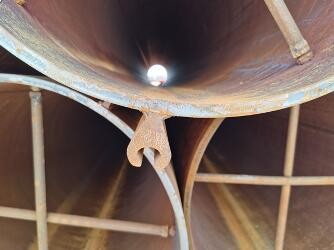Jul . 27, 2024 19:36 Back to list
Manufacturers of ERW and LSAW Steel Pipes for Various Industrial Applications and Construction Needs
An Overview of ERW and LSAW Steel Pipe Factories
Steel pipes are fundamental components in various infrastructure projects, playing a crucial role in industries such as oil and gas, water supply, construction, and manufacturing. Among the several types of steel pipes, Electric Resistance Welded (ERW) and Longitudinal Submerged Arc Welded (LSAW) pipes are two of the most widely used, each serving specific applications and requirements. This article delves into the factories that manufacture these types of pipes, highlighting their processes, advantages, and technological advancements.
Understanding ERW Steel Pipes
ERW pipes are produced by welding rolled steel strips or plates in a longitudinal seam using electric resistance. The manufacturing process begins with the selection of high-quality hot-rolled coils, which are then slit to the desired width and shaped into a tubular form. The edges of the strip are heated using electrical resistance and then pressed together to form a weld.
ERW pipe factories employ various quality control measures to ensure that the pipes meet international standards. These measures often include advanced inspection techniques such as ultrasonic testing, X-ray examination, and hydrostatic testing. The primary advantage of ERW pipes lies in their cost-effectiveness and ability to be produced in relatively small diameters, making them ideal for a range of applications, from water pipelines to structural components in buildings.
The LSAW Process
In contrast, LSAW pipes are manufactured through a more complex welding process. The production starts with larger steel plates that are rolled into a cylindrical shape and then welded along the length of the seam using submerged arc welding techniques. This method involves a thick layer of flux that protects the molten weld from contamination, leading to strong and durable joints.
LSAW factories typically focus on producing pipes with larger diameters and heavier wall thicknesses, which are essential for transporting high-pressure fluids such as oil and gas. The LSAW method is recognized for creating pipes that exhibit superior mechanical properties, making them suitable for high-stress environments. Additionally, LSAW pipes are often used in applications that require resistance to extreme temperatures and corrosive substances.
erw lsaw steel pipe factories

Technological Advancements
Both ERW and LSAW steel pipe factories have embraced technological advancements to enhance their manufacturing processes. Automation plays a crucial role in increasing production efficiency and maintaining high-quality standards. Advanced machinery and robotics are now commonly used in welding, cutting, and inspection processes, reducing the likelihood of human error and improving consistency.
Furthermore, the adoption of Industry 4.0 technologies, such as the Internet of Things (IoT) and artificial intelligence (AI), allows factories to monitor production in real-time and analyze data for predictive maintenance. This shift not only increases productivity but also reduces downtime, contributing to a more sustainable manufacturing approach.
Environmental Considerations
In recent years, there has been a growing emphasis on sustainability within the steel pipe manufacturing industry. Many ERW and LSAW factories are adopting environmentally friendly practices, such as recycling waste materials and reducing energy consumption. By investing in cleaner technologies and optimizing production processes, these factories contribute to reducing the overall carbon footprint associated with steel production.
Conclusion
ERW and LSAW steel pipe factories are integral to the steel industry, providing essential products for various applications. With advancements in technology and a focus on sustainability, these manufacturing facilities continue to evolve, meeting the ever-growing demands of global markets. As the world increasingly relies on infrastructure development, the importance of high-quality steel pipes manufactured through efficient and environmentally responsible processes cannot be overstated.
-
High Quality Mild Steel Pipe Manufacturers in China for Exporting Premium Industrial Solutions
NewsAug.01,2024
-
Exploring Key Characteristics of Wholesale API Steel Pipes for Your Business Needs
NewsAug.01,2024
-
Current Wholesale Prices for ERW Steel Pipes in the Market Right Now
NewsAug.01,2024
-
Exploring the Diverse Applications and Benefits of China Round Steel Pipes in Construction and Industry
NewsAug.01,2024
-
Top Quality API 5L ERW Steel Pipe Manufacturer Offering Reliable and Durable Solutions for Your Needs
NewsAug.01,2024
-
Reliable Supplier of Premium Quality Concrete Pipes for Durable Construction Projects
NewsAug.01,2024